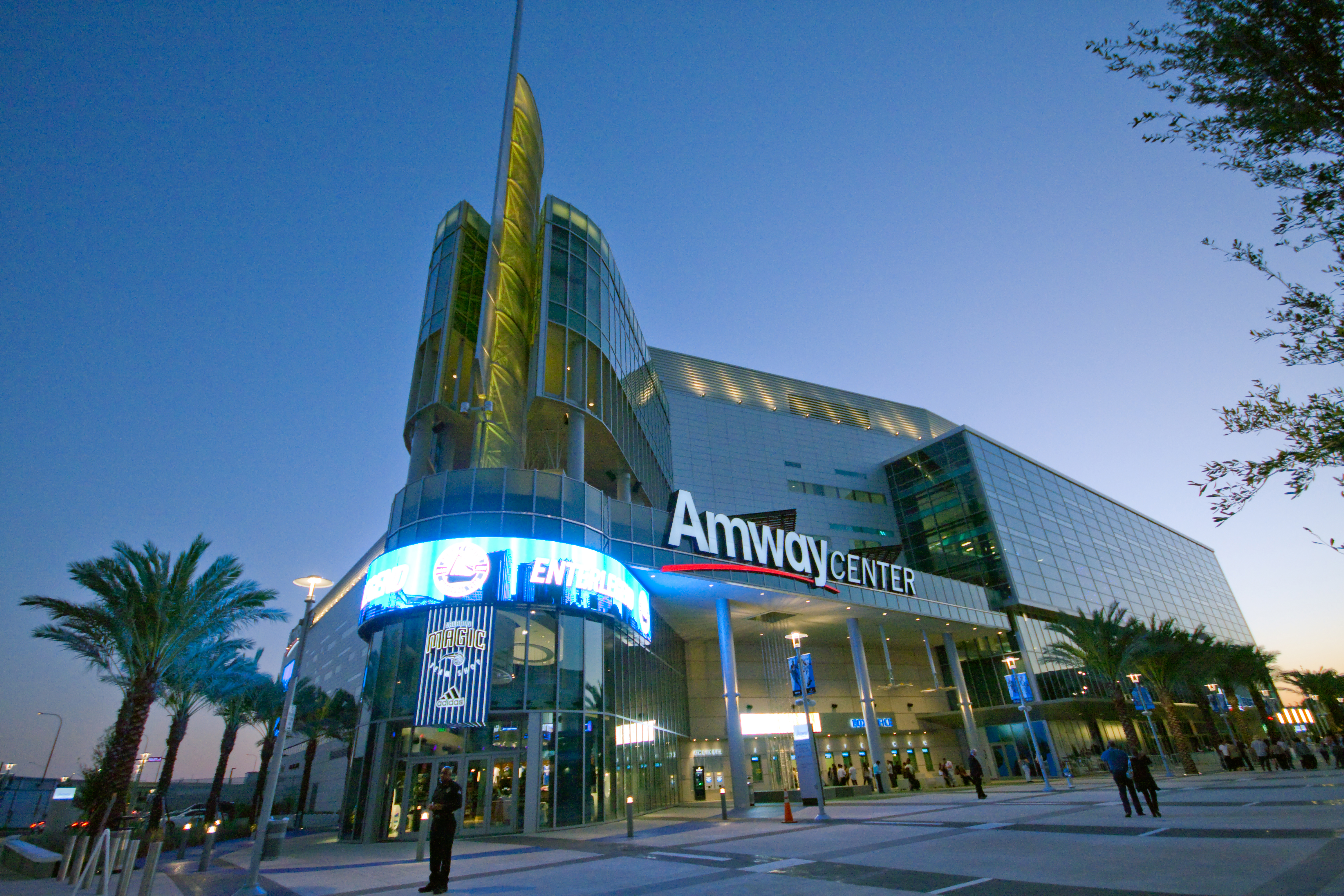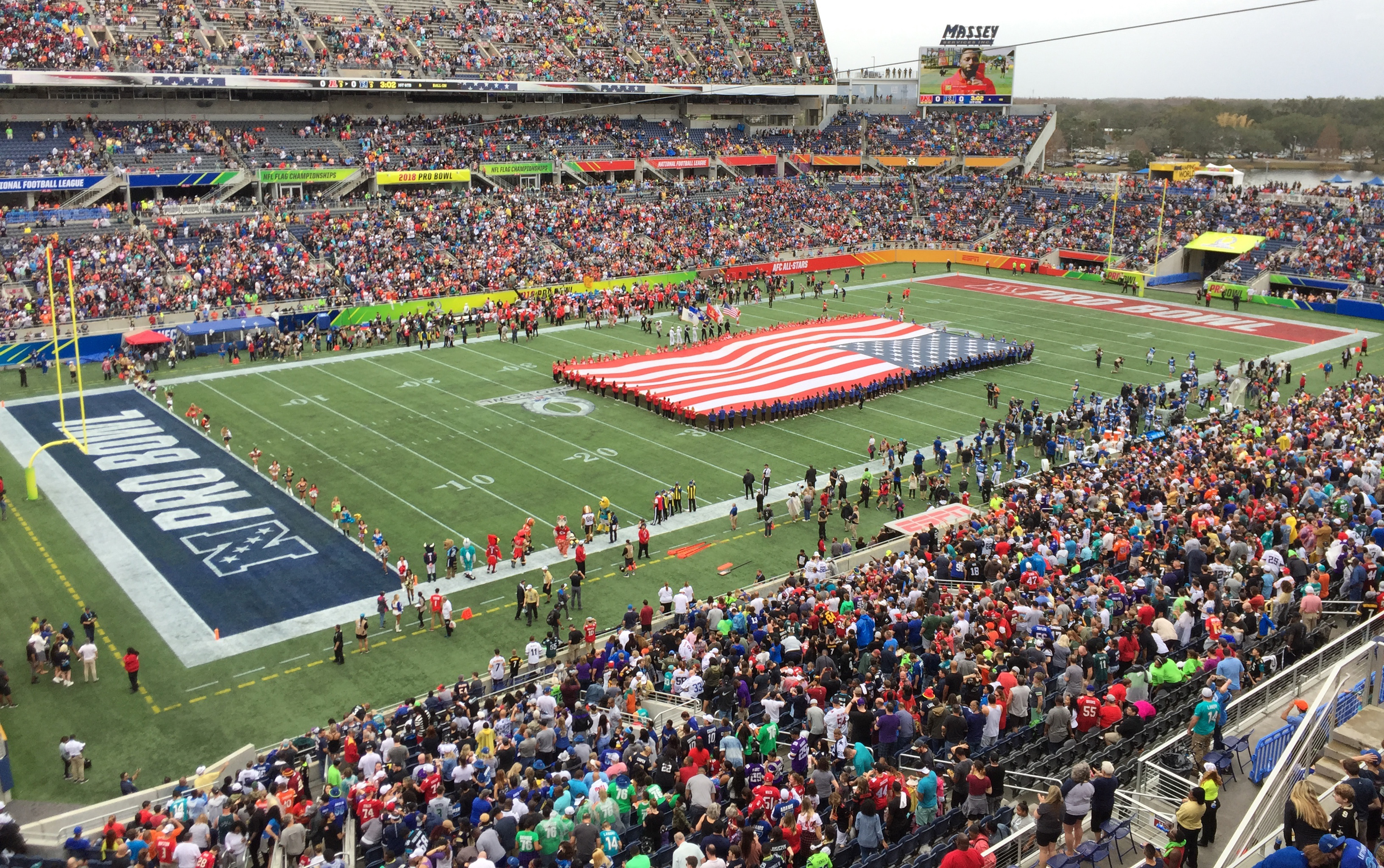Taking the Lead
Stadiums Move Orlando Toward More Energy-Efficient Future
From AHR Today 2020 Newsletter
Magic happens in Orlando.
The home of the Orlando Magic, the city’s NBA team, is an energy-efficient, 875,000 ft2 (81 290 m2) arena that houses an ice rink under the basketball court. Amway Center was the first NBA facility in the United States to earn LEED Gold certification for new construction from the USGBC and is also the home of the Orlando Solar Bears from the ECHL, a mid-level professional ice hockey league.

Amway Center—the home of the Orlando Magic and Orlando Solar Bears—is Orlando’s largest energy consuming building and the city’s largest conditioned space. A local utility runs a district chilled water loop throughout downtown Orlando. That chilled water service supplies Amway’s large air-handling units in each quadrant of the arena.
Credit: Ray Villalobos
As part of Orlando Mayor Buddy Dyer’s Green Works plan, the City of Orlando has performed ASHRAE Level II energy audits on 55 high-energy-using buildings that are part of the city’s portfolio of more than 7,000,000 ft2 (650 321 m2) of managed space since 2015. The Green Works initiative is a strategy to help Orlando become more energy-efficient, resilient and sustainable. Because Amway Center is such a large energy consumer, the city made its energy efficiency a priority.
Of the city’s largest energy-consuming buildings, Amway Center—the home of the Orlando Magic and Orlando Solar Bears—tops the list, said Ian LaHiff, P.E., Member ASHRAE, engineering project manager for the City of Orlando. Amway Center is the city’s largest air-conditioned space and requires the most focus of operation staff and building automation controls, he said.
“The City of Orlando strives to optimize energy efficiency while maintaining an elevated audience experience,” said LaHiff, government affairs co-chair for the ASHRAE Central Florida Chapter.
The arena’s heating and cooling systems are just one layer of its complexity. A local utility runs a district chilled water loop throughout downtown Orlando. That chilled water service supplies Amway’s large air-handling units in each quadrant of the arena, said LaHiff.
Under the basketball court, layered insulation, and the arena’s ice, miles of piping use chilled water from the district cooling system to cool off heat exchangers’ compressors on the ice-making machines. Instead of having a chiller, a cooling tower and other equipment for the ice-making process, Amway uses chilled water to cool compressors that provide ice-making capabilities, he said.
LaHiff said the city has seen both operational and capital cost savings using this strategy.
Starting in 2016, Orlando also began to completely replace sports lighting systems with high-performance LED systems at Amway. The city is planning another renovation now to implement a large dehumidification unit in the arena.
Sustainability at Camping World Stadium
Another large sports stadium in Orlando is aiming to become more energy-efficient.
Camping World Stadium—home of the NFL Pro Bowl—underwent a $207.7 million renovation in 2014 that included major demolition and reconstruction to modernize the facility. The recent renovation allowed for modern conveniences and different VIP areas and tailgate zones, said LaHiff.
The 65,000-seat Camping World Stadium opened in 1936, and until the recent renovation, hardly had air-conditioning. The stadium still does not have a centralized HVAC system, according to LaHiff. The stadium uses split systems and smaller systems to serve the new conditioned spaces.

Credit: Todd Van Hoosear
LaHiff said the city is looking to build more spaces and add more luxury suites. While doing so, the city will try for the stadium to earn LEED certification.
Sports stadiums and entertainment facilities have been leaders in energy-efficient buildings that the public widely uses. Orlando is no exception. Designing an energy-efficient stadium includes challenges other building types do not face.
LaHiff said arenas and stadiums are large and more complex than office buildings because the stadiums contain different facilities such as restaurants, production areas, data centers and bars.
Other challenges for sustainable sports and entertainment facilities are maintaining a high level of audience experience and thermal comfort while optimizing the building systems and establishing a unified sustainable culture that educates in a way that leads to environmental stewardship, said LaHiff.